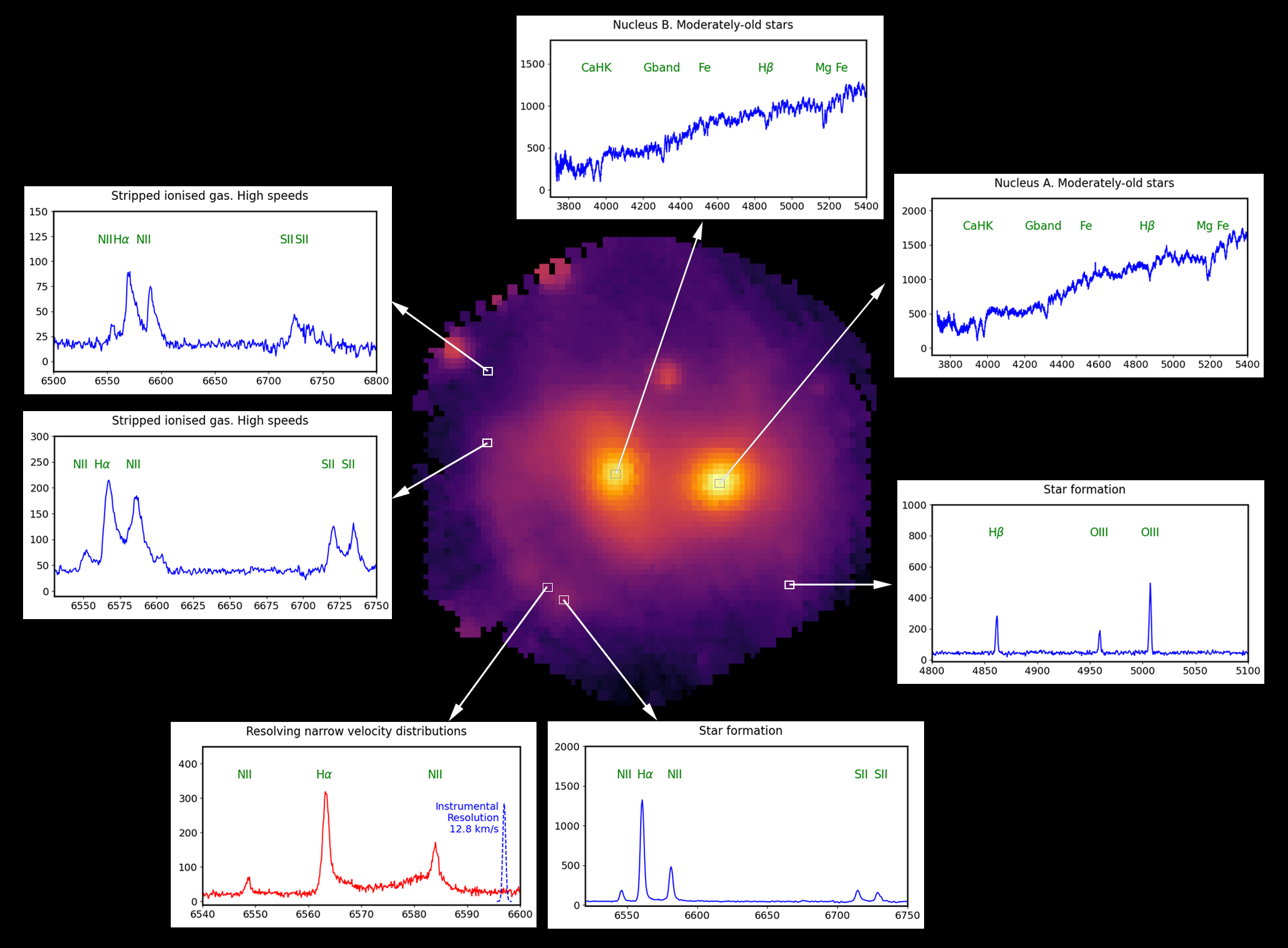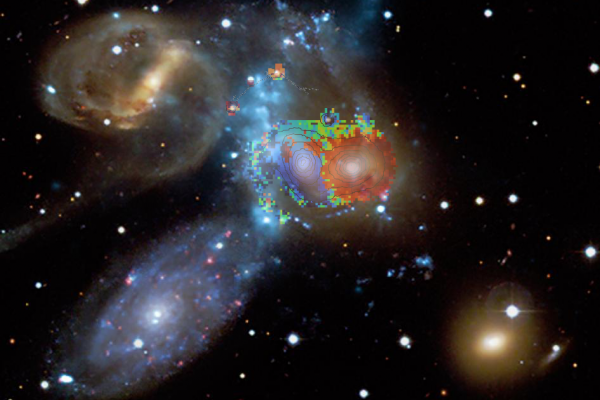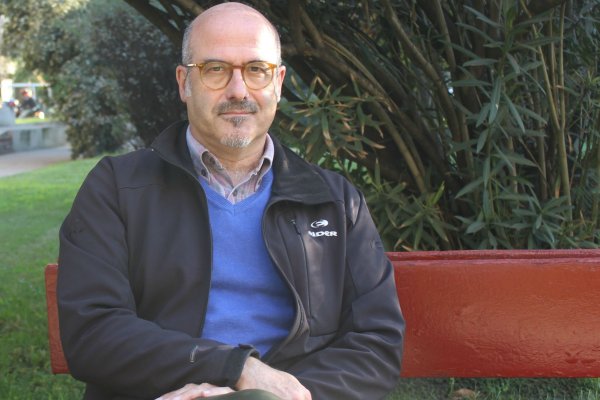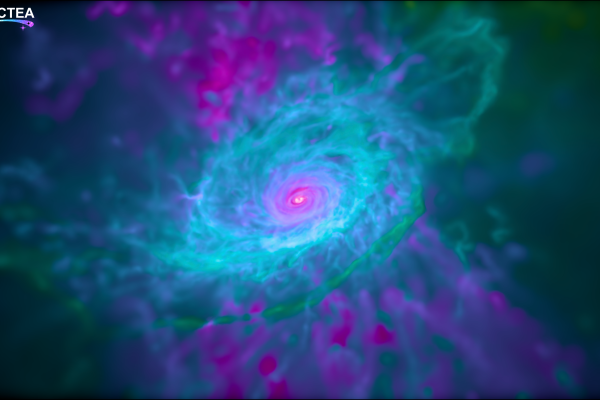Barcelona, 12 December, 2022. The Isaac Newton Group of Telescopes (ING) and the WEAVE instrument team present observations of the first light with the WEAVE spectrograph. WEAVE is a powerful new generation multifibre spectrograph in the William Herschel Telescope (WHT) at the Roque de los Muchachos Observatory (La Palma, Canary Islands) which has recently been launched and is already generating high-quality data.
Astronomers from all over Europe have planned eight surveys for observation with WEAVE, including studies of stellar evolution, the Milky Way, the galaxy evolution and cosmology. In line with the European Space Agency's Gaia satellite, WEAVE will be used to obtain spectra of several million stars in the disc and halo of our galaxy, enabling the archaeology of the Milky Way. Nearby and distant galaxies will be studied to know the history of their growth. And quasars will be used as indications to map the spatial distribution and interaction of gas and galaxies when the universe was only about 20% of today's age.
First light observations: Stephan's Quintet galaxies
WEAVE targeted NGC 7318a and NGC 7318b, two galaxies at the centre of Stephan's Quintet, a group of interacting galaxies. This group had already been observed with the Hubble, Spitzer and Chandra telescopes, among others, and more recently also with the James Webb Space Telescope (JWST). It is also famous for its role in the 1946 Christmas film It's a Wonderful Life. Its galaxies, four of which are 280 million light-years from Earth, are colliding with each other, providing an excellent "close-up" laboratory for studying the consequences of galaxy collisions and subsequent evolution.
The observations of the first light were carried out with the so-called Large Integral Field Unit (LIFU) fibre array, one of WEAVE’s three fibre systems. When using the LIFU, 547 very compact optical fibres transmit the light from a hexagonal area of the sky to the spectrograph, where it is analysed and recorded.
WEAVE’s LIFU has measured a large number of individual spectra of the two central galaxies of Stephan's quintet and their surroundings, and has examined the intensity of the colours of their light, from the ultraviolet to the near-infrared. These spectra reveal, among other information, details essential for studying the collision processes, such as the motion and distribution of stars and gas, and their chemical composition. From these data, we can learn how galaxy collisions transform the other galaxies in the group.

Marc Balcells, ING director, explains: "Our goal has been to install a unique instrument that will allow us to carry out cutting-edge astronomical research. It has been fantastic to receive financial support from the national research agencies of the three ING partner countries (UK, Spain and the Netherlands), as well as contributions from other non-ING countries (France and Italy). We are pleased to demonstrate that the LIFU part of WEAVE not only works, but produces high-quality data. The ING telescopes will continue to deliver results of high scientific impact in the coming years. We look forward to announcing soon the first-light events for the other observing modes, which are currently in the final calibration phase”.

In this image, the blue, green and red colours in the central part indicate speeds derived from the WEAVE spectra and are superimposed on an image of Stephan's Quintet composed of starlight (from the CFHT telescope) and X-ray emission from hot gas (bluish vertical diffuse band, from the Chandra X-ray Observatory). The speeds obtained by WEAVE indicate that the left-centred galaxy (NGC 7318b, painted blue) is entering the group from behind at about 800 km/s (almost 3 000 000 km/h). This high-speed collision wreaks havoc on NGC 7318b. Clouds of hydrogen gas —the fuel needed for the formation of new stars— are receding from the galaxy. This is likely to slow down the rate of new star formation in this galaxy. The WEAVE spectra will help to find out the fate of the expelled gas as it moves out into the space between the galaxies in the group. Credits: X-ray (blue): NASA/CXC/CfA/E. O'Sullivan, optics (brown): Canada-France-Hawaii-Telescope/Coelum, WEAVE LIFU: Marc Balcells.
The WEAVE, a new generation spectrograph
The WEAVE spectrograph uses optical fibres to collect light from celestial objects and transmits it to a spectrograph that separates the light according to its different wavelengths. It can work at two different spectral resolutions, which are used to measure the speeds of objects in the line of sight (using the Doppler effect) and to determine their chemical composition. The versatility of WEAVE is one of its main strengths. While the LIFU mode contains hundreds of fibres in a compact distribution, essential for imaging extended areas of the sky, in the MOS mode about a thousand individual fibres can be placed (by two robots) to simultaneously collect light from stars, galaxies or quasars. During the first five years of operation, spectra of millions of individual stars and galaxies are expected, a goal that can be achieved thanks to the WEAVE spectrograph's ability to observe so many bodies at once.
The Catalan contribution to the WEAVE spectrograph
This project involves scientists from the Institute of Cosmos Sciences of the University of Barcelona (ICCUB) and the Technical University of Catalonia (UPC). The Institute for Space Studies of Catalonia (IEEC) is taking part with researchers from the ICCUB and UPC units. The Catalan institutions have worked, from the beginning of the project, on the definition of the scientific objectives and the selection of the objects to be observed —from stars in various evolutionary phases to star clusters— as well as in the sampling of quasars, extremely bright and very distant active nuclei galaxies. Specifically, two ICCUB-IEEC members, Maria Monguió and Mercè Romero-Gómez, and one from the UPC, Roberto Raddi, are members of the international working groups on young stars, galactic archaeology and white dwarfs that make up the team of scientists responsible for planning the observations. Teresa Antoja and Ignasi Pérez-Ràfols, also from the ICCUB-IEEC, co-lead the research teams responsible for galactic disc dynamics and quasars, respectively.
Maria Monguió, from the Institute of Cosmos Sciences (ICCUB-IEEC), says: "After years of preparation, we hope to soon be able to obtain the first spectra of stars in the disc of our galaxy. The quantity and quality of the millions of spectra we expect to observe will allow us, among other things, to analyse regions of recent star formation and to measure how stars move. These data, together with those provided by the Gaia mission, will allow us to address fundamental questions about the formation and evolution of the Milky Way”.
Roberto Raddi, commenting on the contribution of the Polytechnic University of Catalonia, says: "Our team will contribute to the study of some 100,000 white dwarfs previously observed by Gaia, and discover the secrets behind the last evolutionary phases of Sun-like stars, including the fate of their planetary systems, as well as the mechanisms that lead to supernova explosions in binary systems with white dwarfs".
Further information:
https://www.ing.iac.es/PR/press/weave_LIFU_first_light.html
http://arxiv.org/abs/2212.03981
University of Barcelona
+34 934 035 544



